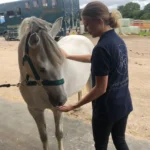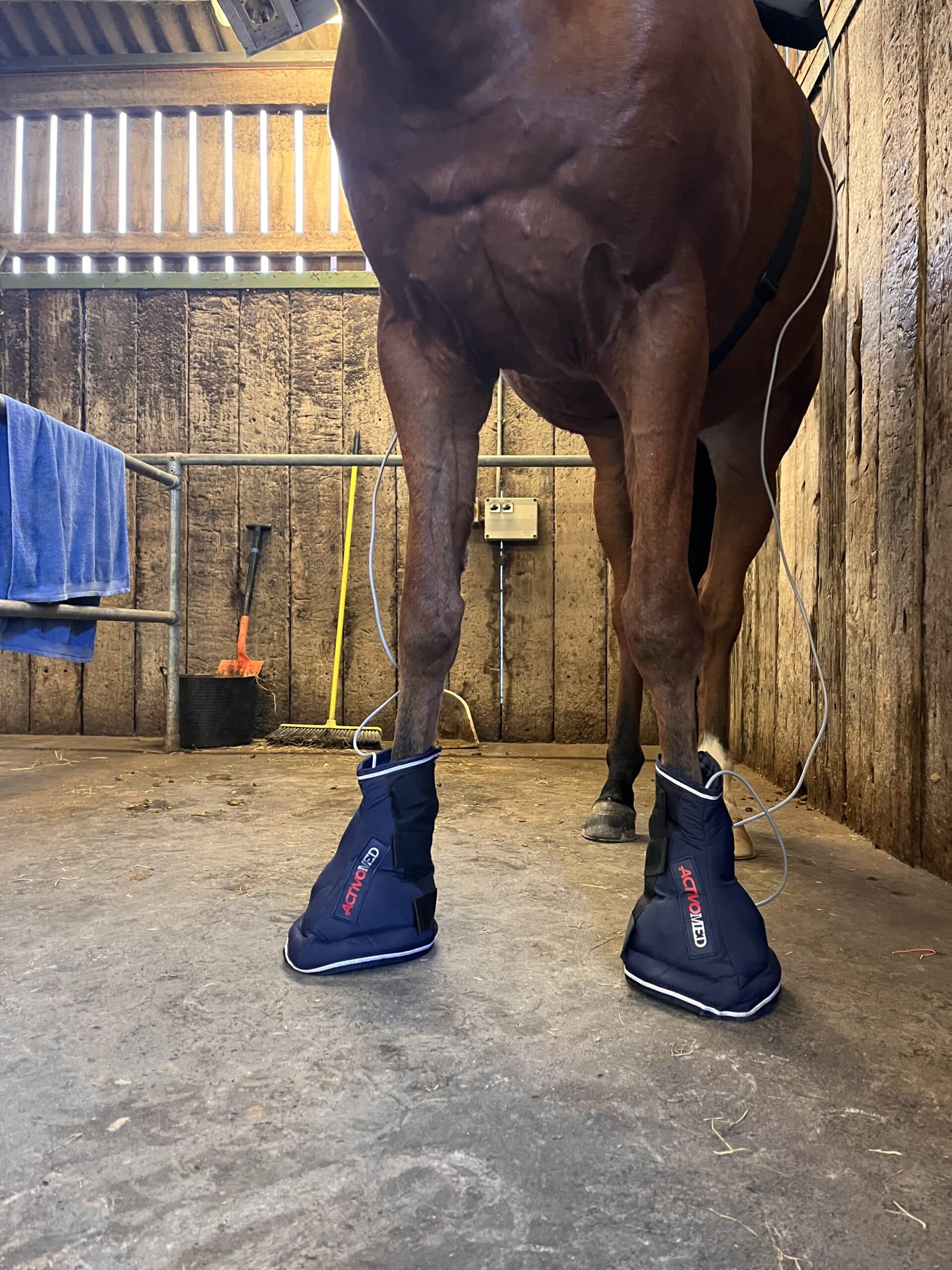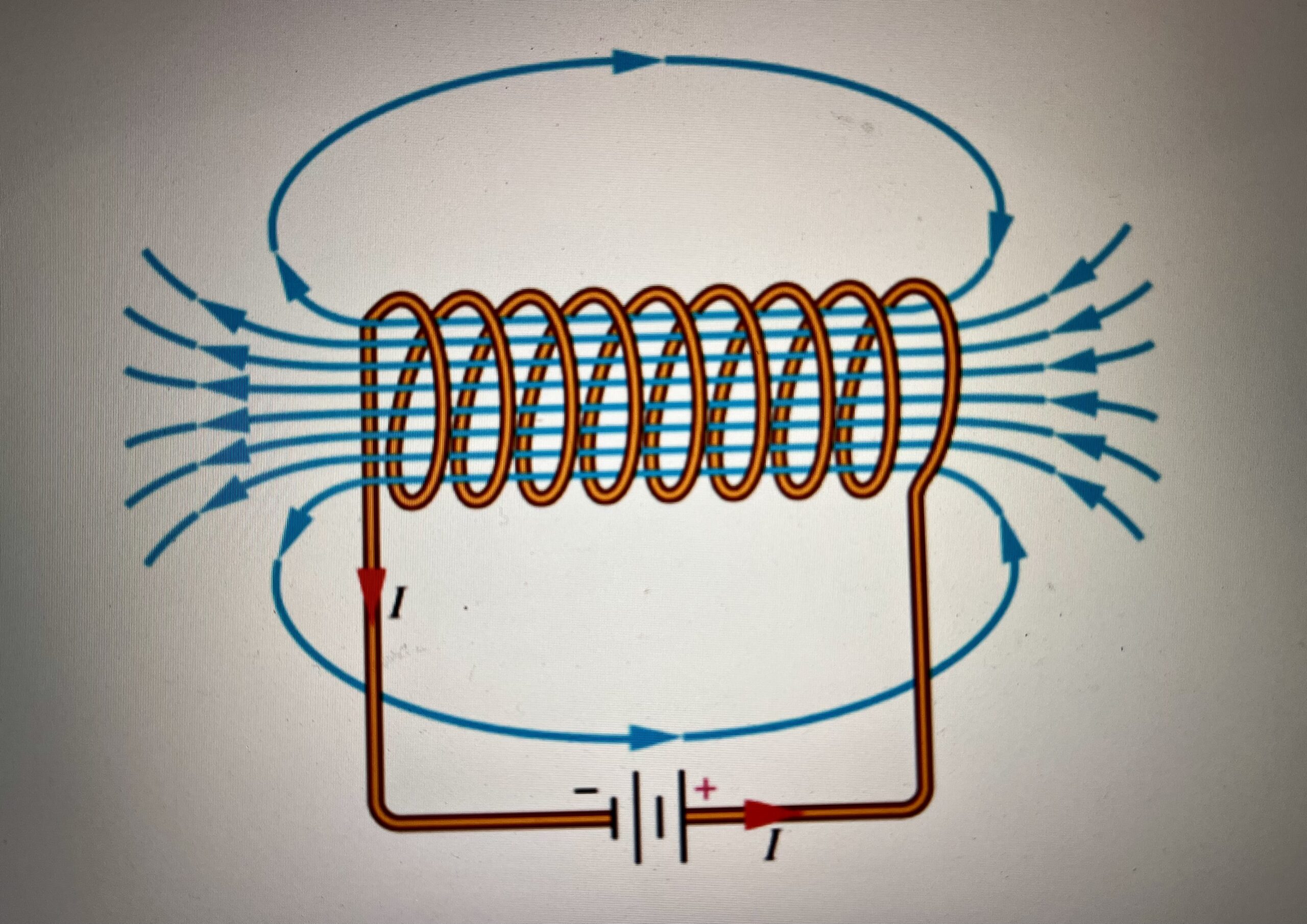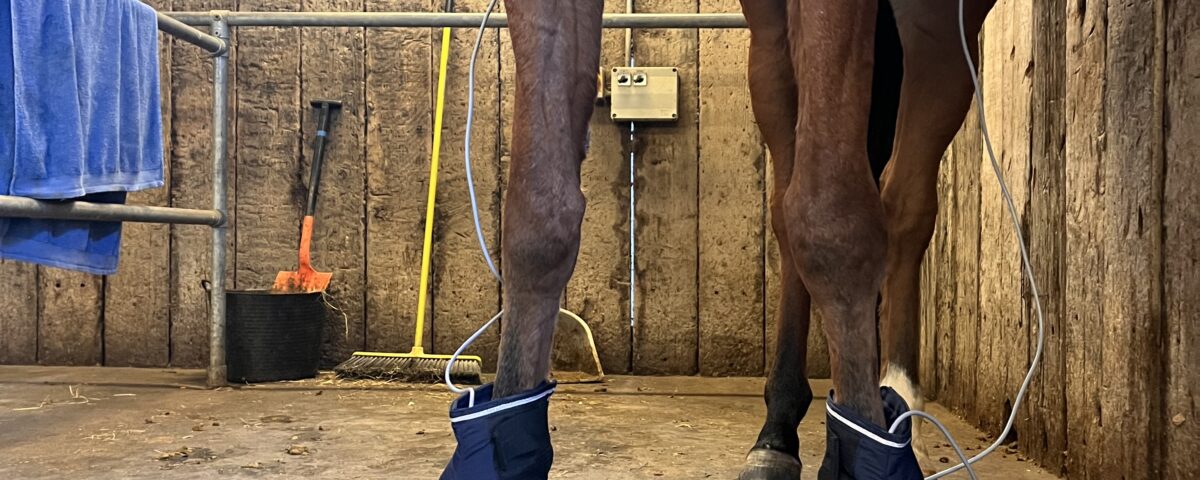
New Wobble Boards
November 30, 2023
Hayley Druce Article
December 25, 2023
In the world of equine care, a number of therapeutic approaches are surfacing accompanied by bold marketing language. I am forever a sceptic, but still in the search for effective approaches to manage and treat chronic lameness. In my case, coming from the foot.
It turns out, the foot is rather tricky to treat as it sits within its own protective capsule (the hoof). There are several approaches that offer therapeutic interventions for horses' feet, see our blog on cold therapy for an example of an effective intervention. Another intervention I have researched and trialled that has (in my opinion) sound theoretical principles is Pulsed Electromagnetic Field (PEMF) therapy. This is a non-invasive treatment used for health improvement in humans and animals, including horses, that has a number of promising applications as it facilitates the body’s own process of healing from within.
Hugo is wearing ActivoMed's hoof boots.
As a neuroscientist, I understand the principles of neurogenesis and neuroplastic processes reasonably well and apply these principles in the work I do with humans. It is well documented that extrinsic electromagnetic fields affect internal cellular processes. Lets start from scratch: Cells in the mammal body have a lifecycle starting with cell generation (birth of a cell), migration (cells traveling to where it is needed) and eventually integration via a process called neuroplasticity. There is such a thing as programmed cell death, which is necessary to keep neural networks healthy. This process scraps the cells that are withering away and becoming defunct. Luckily, new cells are generated all the time to compensate for the loss of cells and replenish the network and continue the function of the network. Sometimes, cell death occurs due to disease or damage. When networks are damaged, the body is programmed to increase production of new cells to compensate and maintain functioning. This is why impact facilitates bone cell growth and similarly, novel mental challenges facilitates growth of new brain cells. Without enough impact or challenges, cellular networks may wither away and get weaker and weaker… It’s the concept that you may have heard before: ‘Use it or Lose it’.
PEMF
PEMF works by generating electromagnetic field by passing currents in coil. The field between two travelling currents creates a temporal field that is very good at penetrating material and therefore affects cells in the nearby cellular networks. This field stimulates cells functioning and also the life cycle of cells - signalling to the body to generate and integrate new cells to area affected. The effect, once cells have successfully integrated is improvement of the functioning that the cells are responsible for.

Unlike treatments (laser and ultrasound) that diminish in strength with depth, PEMF maintains its influence throughout the body, ensuring that healing isn't just skin deep. It is also well documented that electromagnetic fields pass through the body with relatively little resistance. Even dense tissue such as bones are penetrated successfully by electromagnetic fields, several inches away from the source that generated the field. Particularly if the field is applied from several angles. This means PEMF can reach deeper structures that are otherwise challenging to treat with surface-level therapies. The depth of penetration can depend on several factors, including the strength and frequency of the PEMF device, the specific coil design, and the type of tissue being targeted.
However, the effectiveness of PEMF is not solely based on depth of penetration. The therapeutic benefits also depend on the specific frequency and intensity settings, which are often adjustable to tailor the treatment to specific conditions or desired outcomes. Lower frequencies are typically associated with deeper penetration, while higher frequencies may affect surface tissues more.
Summary of benefits
Reduced Inflammation and Pain Relief
PEMF generates electromagnetic fields at different frequencies, stimulating the natural charge of the cells. This can lead to increased ion exchange, which is the process by which cells metabolize nutrients and expel waste. Changing the electrical charges of cells can have anti-inflammatory effects beneficial for horses suffering from various conditions that cause swelling, discomfort and pain. PEMF may also increase endorphin production, which are the body’s natural painkillers.
Enhanced Healing and Recovery
PEMF stimulate neurogenesis, cell proliferation and potentially also extends the life span of cells, all playing roles in promoting the body's regeneration processes by activating various cellular pathways, which may speed up the healing of skin, muscle, tendon, and bone tissues. The therapy may speed up the healing process of damaged tissues by stimulating cell growth and repair, making it a useful therapy for recovery of bone and tendon injuries, but also a post exercise intervention to improve recovery and limit wear and tear.
Improved Performance
By promoting better circulation, tissue oxygenation and improved range of motion in joints and muscles, PEMF can help improve a horse's overall performance. By stimulating cell activity, PEMF therapy can lead to vasodilation, or the widening of blood vessels, which can improve circulation and the oxygenation of tissues. Better circulation leads to increased oxygen delivery to cells, which is crucial for cellular metabolism and optimal function. Oxygen in fact increases cellular energy, enabling it to function more effectively.
Stress Reduction
PEMF appears to have a calming effect on many horses, reducing stress and anxiety before competition, travel or box rest are all examples where PEMF may help improve their general behaviour and comfort.
Understanding the Risks
While PEMF is celebrated for its benefits, it's critical to approach it with caution. A qualified veterinarian and ideally a physiotherapist with good understanding of PEMF and its applications and safe practice should be consulted before beginning therapy, especially for horses with acute infections, pregnant mares, or those with cancer. Awareness and expert guidance ensure the safe application of PEMF.
Imagine using a device that makes your horse’s pain less severe, but the underlying problem is not being treated, e.g. in the case of poor foot conformation. While PEMF may help ease pain and improves bone density, it cant change conformational problems, at least I don’t believe it can. Therefore, there is a risk that PEMF can cover up more serious problems that require other interventions. We have come to know a few good professionals out there that knows this approach well.
Optimising Treatment
PEMF therapy is generally considered safe, but as with any treatment, there are potential risks and contraindications to be aware of. Here are some of the potential risks associated with PEMF therapy for horses:
Electrical Devices: PEMF therapy should not be used near electronic or magnetic-sensitive equipment, as it may interfere with their operation. Additionally, it should not be used on horses that have implanted electronic devices.
Acute Infections: While PEMF therapy is beneficial for many inflammatory conditions, using it on horses with acute infections may potentially worsen the infection by increasing blood flow to the area.
Pregnancy: The safety of PEMF therapy has not been fully established during pregnancy, so it's typically recommended to avoid using it on pregnant mares.
Cancer: There is a theoretical risk that PEMF therapy could stimulate the growth of existing cancer cells. This risk has not been conclusively proven or disproven, but caution is advised.
Sensitivity: Some horses might be sensitive to the sensation of PEMF therapy and could become anxious or uncomfortable.
The key to maximizing the benefits of PEMF therapy lies in customizing the treatment frequency. Acute conditions may require daily sessions, while maintenance or performance enhancement might call for weekly applications. The right schedule hinges on the individual needs of the horse and the condition being treated. Speak with qualified veterinarians and physiotherapists about the needs of your horse to tailor the treatment.
PEMF therapy can play a role in equine care, offering a non-invasive route to enhanced well-being for horses. As a therapy that aligns with the body's own natural healing processes.
